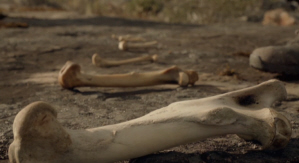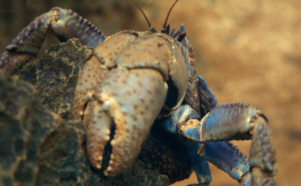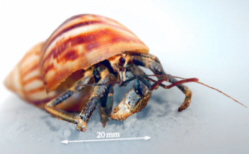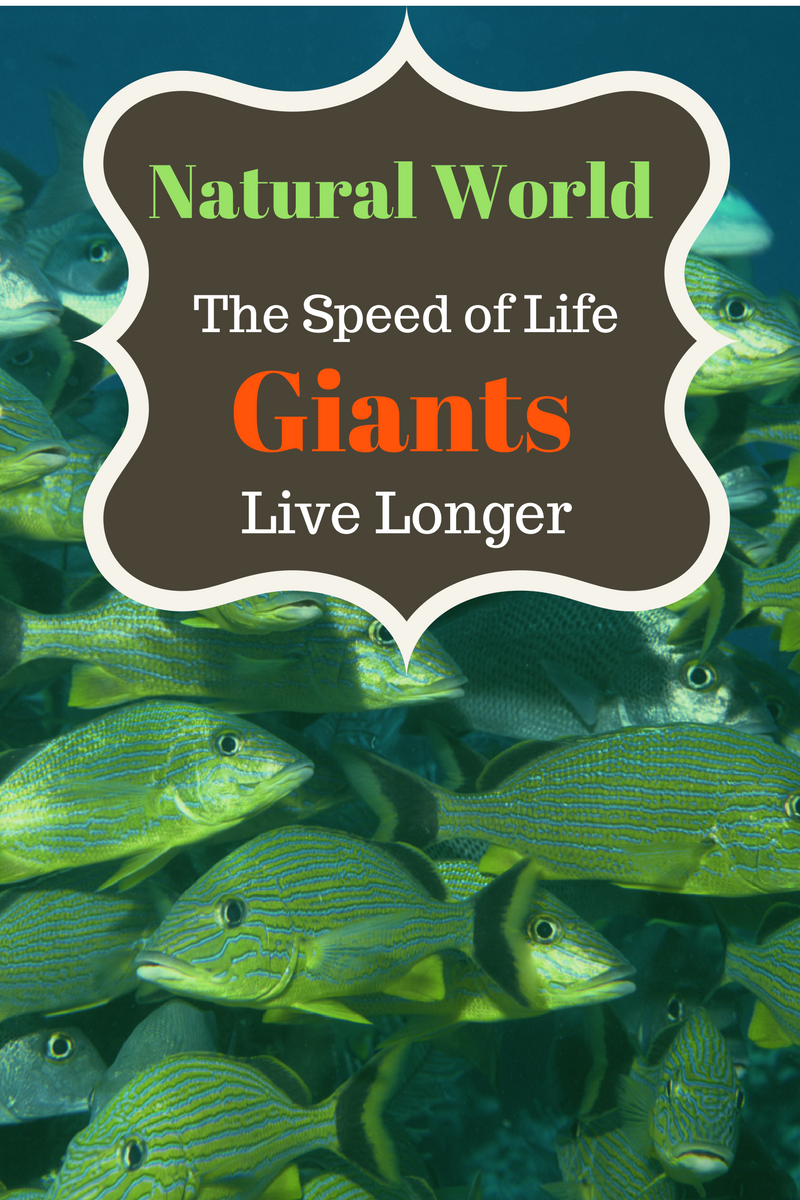Professor Brian Cox explores the concept that larger animals live longer because they have slower metabolisms. To test his theory that giants live longer, he looks at creatures of all sizes.
In a previous post we looked at energy in terms of the cosmos. Here we consider energy consumption by life here on Earth.
Right across the natural world, the size you are has a profound effect on your metabolic rate – or your “speed of life”. For Australia’s small marsupial mouse, even at rest, his heart is racing away. But the fox-sized Tasmanian Devil, he ticks along at a much slower rate. And then there’s me, living life at a languid 60 beats a minute.
Looking beyond heart rate, your size influences the amount of energy you need to consume, and the rate at which you need to consume it.
Bigger bodies have more cells to feed. So, you might expect that the total amount of energy needed goes up at the same rate as any increase in size. But that’s not what happens.
If you plot the amount of energy an animal uses against its mass, for a huge range of sizes, from animals as small as flies, and even smaller, all the way up to whales, then you do get a straight line, but the slope is less than one. So, that implies that gram for gram, large animals use less energy than small animals.
This relationship between the metabolism and size, the speed of life, significantly affects the amount of food larger animals have to consume to stay alive. They use energy more slowly, their metabolism is lower. And, large animals, giants live longer.
Speed of Life
Now, if my metabolic rate is scaled one-to-one with that of a mouse, then I would need to eat about 4 kg of food a day. In my language, that’s around 67,000 kJ of energy, which more colloquially is 16,000 calories. That is 8 times the amount that I take in on average on a daily basis.
Each of the cells in my body requires less energy than the equivalent cells in a smaller-sized mammal. The reason why this should be so, is not fully understood. It’s also not clear whether this rule of nature gives an advantage to big things, or is actually a constraint placed on larger animals. However, it appears to be indisputable that giants live longer.
Take the relationship between an animal’s surface area and its volume. Big animals have a much smaller surface area to volume ratio than small animals, and that means that their rate of heat loss is much smaller. And that means that there is an opportunity there for large animals. They don’t have to eat as much food to stay warm, and therefore they can afford a lower metabolic rate or speed of life.
Giants live longer
Now if this helps explain the lives of large, warm-blooded endotherms, like birds and mammals. But, doesn’t hold so well for large ectotherms, life’s cold-blooded giants.
Now, there is another theory that says that it wasn’t really an evolutionary opportunity that large animals took to lower their metabolic rate. It was forced on them. It was a constraint, if you like. The capillaries, the supply network to cells, branches in such a way that it gets more and more difficult to get oxygen and nutrients to cells in a big animal than in a small animal. Therefore, those cells must run at a lower rate. They must have a lower metabolic rate and speed of life.

Or it could just be that as you get bigger, then more of your mass is taken up by the stuff that supports you, and the support structures, like bones, are relatively inert. They don’t use much energy.
But whatever the reason, it’s certainly true to say that the only way that large animals can exist on planet Earth is to operate at a reduced speed of life.
If this wasn’t the case, the maximum size of a warm-blooded endotherm like me or you would be around that of a goat. And cold-blooded animals, or ectotherms like dinosaurs, could only get as big as a pony. Any bigger, and giants would simply overheat.
Now, there’s one last consequence of all these scaling laws. That I suspect you will care about more than anything else. And, it’s this – there is a strong correlation between the effective cellular metabolic rate of an animal and its lifespan. In other words, as things get bigger, giants live longer.
Christmas Island Robber Crab
To explore this connection between size and longevity, I’ve left the mainland behind. For my final destination, I’ve come to one of Australia’s remotest outposts. Named Christmas Island when it was spotted on Christmas Day in 1643, this isolated lump of rock in the Indian Ocean is a land of crabs. And in their midst lurks a giant wonder of the natural world.

This is a Christmas Island robber crab, the largest land crab anywhere on the planet. These things can grow to around 50 cm in length, they can weigh over 4 kg, and they are supremely adapted as an adult to life on land. They can even climb trees.
Robber Crab Evolution
Over the years, the crabs have become well adapted to human co-habitation. These things are called robber crabs because they have a reputation for curiosity and for stealing things, anything that isn’t bolted down. They’ll steal food and cameras if they can get half a chance.
These giants live on a diet of seeds and fruit, and occasionally other small crabs. Their large, powerful claws mean they can also rip open fallen coconuts.

They are really quite a menacing animal, actually, for a crab!
What’s wonderful about these crabs is that they live through a range of scales. At different times of their lives, they have a completely different relationship with the world around them, simply down to their size.
Throughout their lives, robber crabs take on many different forms. They begin their lives as small larvae, swept around by the ocean currents. And, as they grow, some of them get swept up onto the beaches of Christmas Island, where they find a shell. Because, they are, in fact, hermit crabs. They live inside their shell for a while. They continue to grow, and eventually, as adults, they roam the forests like this chap here. So these crabs, over that lifespan, inhabit many different worlds.
Robber Crab Giants live Longer
On land, the adults continue to grow and now have to support their weight against gravity. Compared to the smaller crabs whizzing around, these giants move about much more slowly, but they also live far longer.
Of all the species of land crab here on Christmas Island. Robber crabs are not only the biggest, they’re also the longest-living. So this chap here is probably about as old as me. And, he might live to 60, 70, even 80 years old.

Because of the robber crab’s overall body size. Its individual cells use less energy and they run at a slower rate than the cells of their much smaller, shorter-lived cousins.
Slower Metabolism Longer Life
The speed of life is slower for robber crabs. And, it is this slower pace of life allows them to live to a ripe old age.
Your size influences every aspect of your life… from the way you were built… to the way you move… and even how long you live. Your size dictates how you interact with the universal laws of nature.
So there’s a minimum size. Which is set, ultimately, by the size of atoms and molecules. These are the fundamental building blocks of the universe. And there is a maximum size which, certainly on land, is set by the size and the mass of our planet. Because, it is gravity that restricts the emergence of giants. But within those constraints, evolution has conspired to produce a huge range. In size of animals and plants, each beautifully adapted to exploit the niche’s available to them.
Your size influences your form and construction. It determines how you experience the world, and ultimately, how long you have to enjoy it.
Robber Crabs may not be everyone’s idea of a giant. But, they do enjoy great longevity. So, it must be true that giants live longer.
Further Reading
The Fast Metabolism Diet: Lose Up to 20 Pounds in 28 Days: Eat More Food & Lose More Weight
The Louise Parker Method: Lean for Life
How it Works: The Dad (Ladybirds for Grown-Ups)
Speed: How to Make Things Go Really Fast
External Links
Speed of Life – Rate of Living Theory – Wikipedia Page


Leave a Reply
Be the First to Comment!